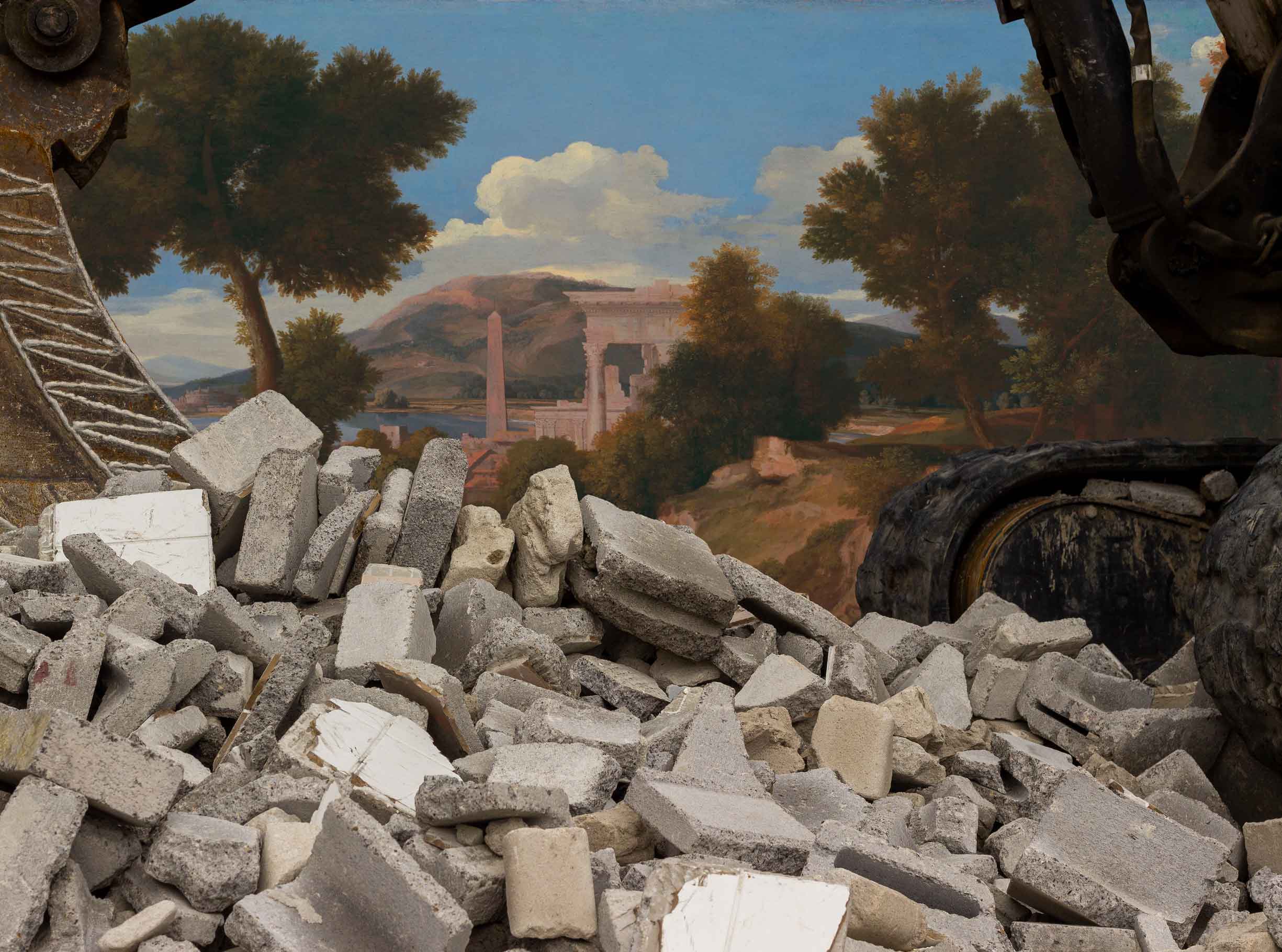











A Landscape for Construction
2020-2022
In the early 16th century, many artists sought to raise the profile of landscape painting to the status of history painting by including scenes from the Bible or dramatic moments from the lives of Saints. These events, often delegated to the lower third of large paintings, included vignettes of daily life — labourers working in the fields or merchants travelling along the roads. At the root of this inclusion is an idealization and romanticization of labour, as well as an erasure of the temporal chasm separating the 16th century and antiquity. Aware that I too am participating in the idealization of the labour of construction workers, this series aims to draw attention to these environments that are often overlooked.
Construction sites are also a tangible connection to the immaterial notion of time. The exterior of a building might remain relatively unchanged for centuries. Then, for a period of a few months or years, it is subject to sudden expansion, restoration, demolition, or transformation. Following this brief flurry of activity, a building will once more enter into a period of relative stability for many decades. In this case, I subject the supposedly timeless landscapes of the Renaissance and Neoclassical periods to a state of impermanence and change.
Construction sites thus provide a moment of instability, within which the future of an urban space can be questioned and contested. Produced in a period of the city’s history that is marred by gentrification, increasingly unaffordable housing, and the displacement of racialized communities in favour of condo villages where whiteness can be safely performed, this series speaks to the necessity of questioning the notion of permanence and tradition.